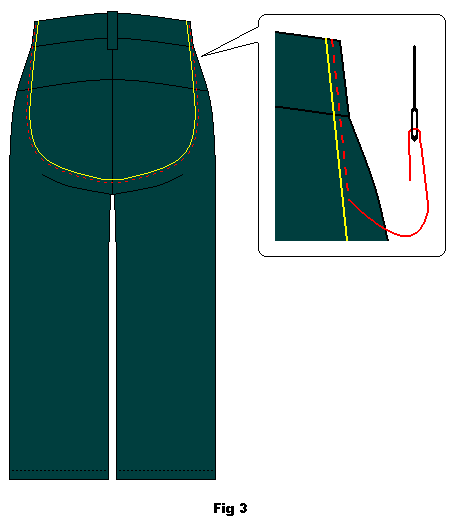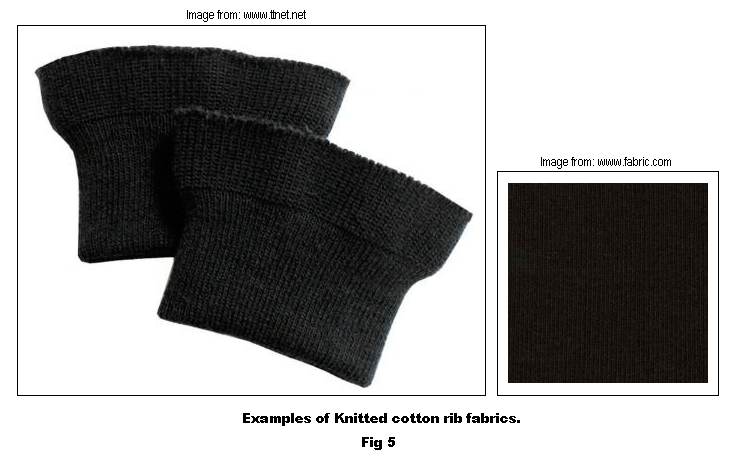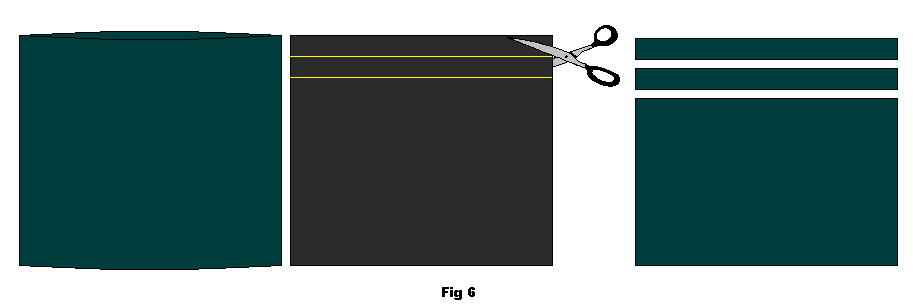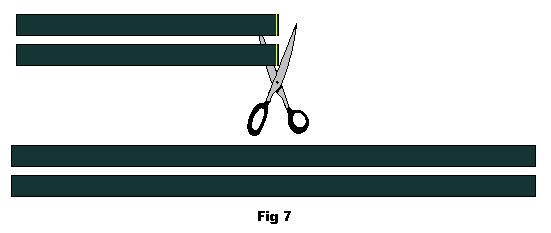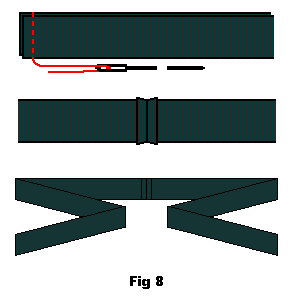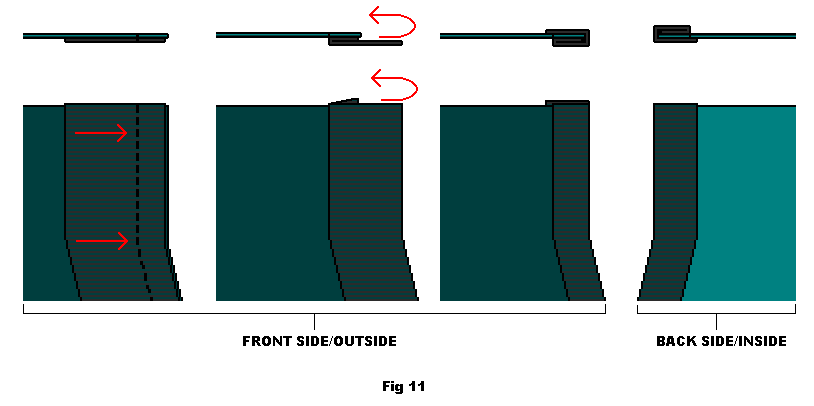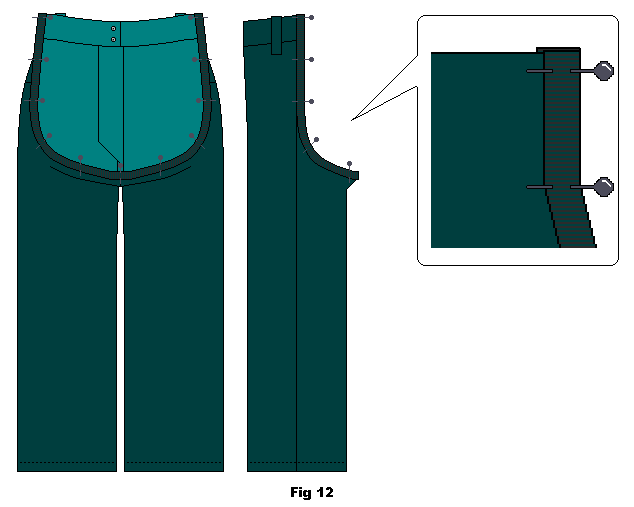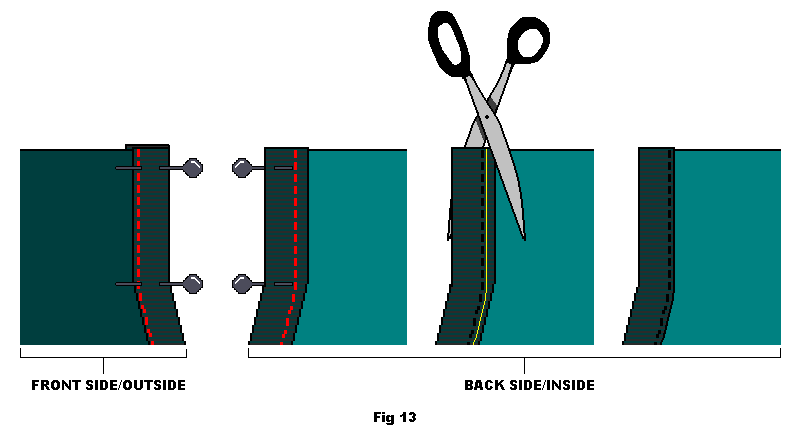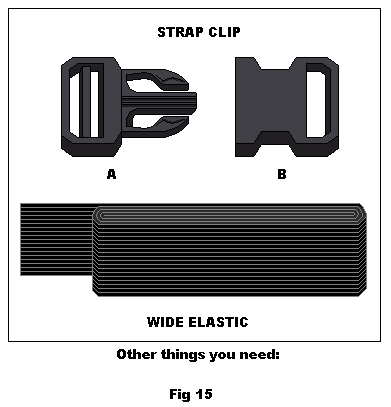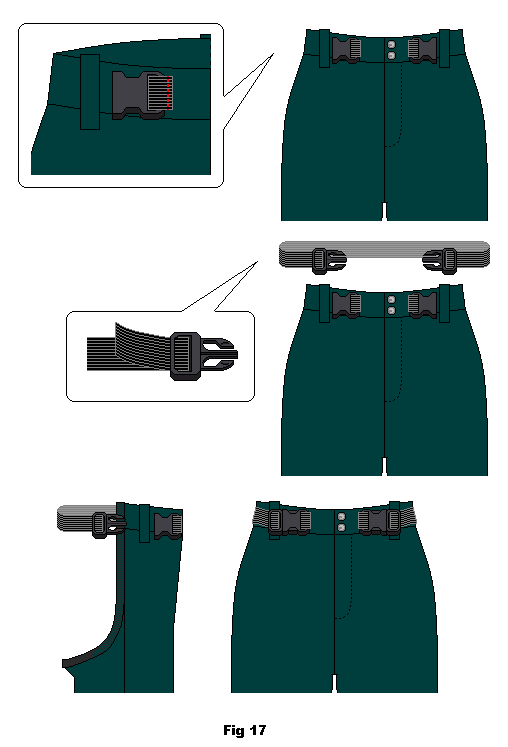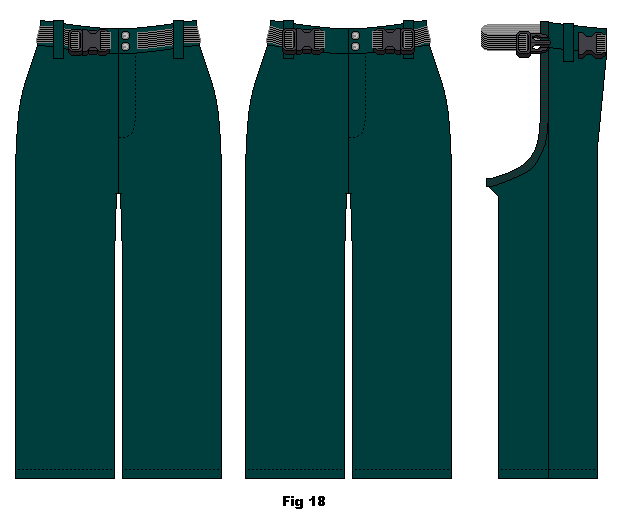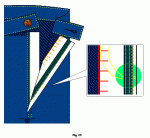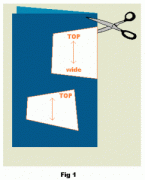Note! You might need to make up for the lack of warmth around the backside by lining the back of the wheelchair or/and cover the cushion in fleece or other warming fabric/material.
Basic snow pants (fig. 1).
Draw up the lines for the cut-out in the back. There are no rules for this but you want to keep some of the width in the sides so leave a few cm of the back piece from the side seams. Go down quite low at the back but not so low that you compromise the crotch line.
Once you are satisfied you need to hand sew a line of stitching on the pants below the drawn line before you cut as these pants are thicker and made of several layers of fabric and you want to be able to keep these layers together. Cut away the marked area (fig. 2 and 3).
Excess fabric is removed (fig. 4).
Facing
You will need some cotton knit rib fabric for this option. It is the type of fabric used in sleeve cuffs etc. on clothing. It is ribbed and stretchy and comes in a tube. You do not need much, ¼ of a meter should be enough with some to spare. The reason to use ribbing rather than regular fabric is that ribbing will pass around the curves easier due to the stretch quality of it (fig. 5).
Mark out and cut 3 cm strips from your ribbed fabric. Depending on the length required and the width of the ribbing 2- 3 strips should be enough (fig. 6).
Cut the side of the strips so they can be opened flat (fig. 7).
Join the lengths together and press the seams flat (fig. 8).
Pin the (now long) strip to the FRONT side of the pants (right side to right side) all around the edge. Line up the raw edge of the pants with the raw edge of the strip (fig. 9).
Sew around the entire edge with a seam allowance of 1 cm or slightly less on the edge side (fig. 10).
Once the strip is sewn into place fold it out then around the raw edge of the pants and to the back side (fig. 11).
Pin into place (fig. 12).
Sew close to the inner edge on the front side (about 1 cm in). Once strip is sewn you can remove any excess strip fabric from the back (fig. 13).
Example finished facing (fig. 14).
Examples of clips and wide elastic. Make sure the elastic width matches the clip when you buy it (fig. 15).
SINGLE CLIP: (can be placed on either side.)
Attach the clip “B” close to the centre of pants front piece. Use a small length of elastic (about 8 cm) and attach it by threading elastic through the clip. Line up the edges so that the elastic is basically folded in half with the clip at one end and the raw edges matched up at the other end. Then sew it into place on the pants.
Measure the waist to see how much elastic is needed. Add around 20 cm extra length and cut the elastic. You can always trim it down later. It is better to start with more than not enough.
Attach the elastic to the other side of the fly on the pants at about the same position as where the elastic of clip “B” is attached on the other side. Attach the end of the elastic to clip piece “A”. This end should be kept adjustable (not sewn into place) so that you can make it looser and tighter when putting the garment on. The elastic should be threaded through the belt loops for more stability (fig. 16).
DOUBLE CLIP.
Attach a clip “B” on either side, close to the centre fly of pants’ front piece Use a small length of elastic (about 8 cm) and attach it by threading elastic through the clips “B”. Line up the edges so that the elastic is basically folded in half with the clip at one end and the raw edges matched up at the other end. Then sew he clips “B” into place on the pants.
Measure the waist, and cut the elastic with about 5-10 cm extra. You can always trim it down later. It is better to start with more than not enough. Attach the two “A” clips to the ends of the elastic. These ends are to be kept adjustable so don’t sew them into place (fig. 17).
Finished examples of different clip combinations (fig. 18).



